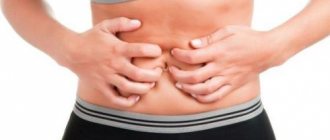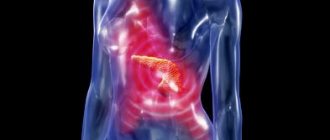Pain. Warns and protects.
Who among us does not know what pain is? Everyone has experienced pain at least once in their life. Defining pain is not so difficult; it does not require sifting through a mountain of medical literature or looking too deeply into medical reference books. When a person is in pain, he suffers, and the only thought that always comes to him and in all situations when pain appears is a desperate desire for it to go away as soon as possible. And she never appeared again. But, alas, there are no miracles in the world, and no matter how much we want it, she always comes back. Sometimes more often, sometimes less often. Every minute, millions of people around the world take painkillers. Humanity consumes tons of analgesics every day. Every year, more and more advanced drugs are being developed and created around the world that “relieve this pain as if by hand.” It seems quite reasonable to us that we give pain a proper rebuff at its first appearance. Have you ever thought, even for a moment, whether the appearance of pain is so accidental? Is it as evil as we think? Remember school, a biology textbook that said that “pain is a vital function of our body that warns us of danger.” There is no pain that is safe, that can be ignored. Nature has built into us certain irritants; when the pain threshold is exceeded, they give the body a signal of danger.
Abdominal pain is a multifaceted symptom.
Abdominal pain is the most common type of complaint. Their causes can be very diverse, ranging from diseases of the digestive tract, worms, appendicitis to inflammation of the lungs, kidneys, bladder, tonsillitis and acute respiratory infections. Abdominal pain can be a sign of a serious illness. It is not our task to teach you how to diagnose complex diseases of the gastrointestinal tract. Usually a person suffering, for example, from a stomach ulcer, knows about his illness and remembers what the doctor recommended to him. But none of us is immune from minor stomach troubles.
A child has a stomach ache: when to sound the alarm
Diagnosing abdominal pain in a child is sometimes a difficult task even for an experienced clinician. After all, children, especially preschool age, are not able to indicate a specific area of pain and note bowel movements. And parents cannot always remember the connection between a symptom and food intake or other provoking factors. So, what do you need to remember if your child complains of abdominal pain? And when should you not postpone a visit to the doctor?
How pain occurs
Most of the digestive system does not have pain receptors as such, and pain “in the abdomen” is caused by irritation of the membrane that covers the organs and separates them from each other (peritoneum).
This irritation may occur due to:
- spasm (in children, more often intestines)
- inflammation (edema),
- or overstretching of the organ, and accordingly, the peritoneum (for example, due to gas formation or obstruction).
And, depending on the cause, it is accompanied by a number of characteristic symptoms.
Qualitative differences
Thus, a catastrophe in the abdomen also has the name “acute abdomen”, is characterized by high intensity and infertility, has a diffuse (with appendicitis, cholecystitis, pancreatitis) or cramping character (with intestinal obstruction, volvulus, strangulated hernia), is accompanied by vomiting (usually multiple), temperature reaction and, unlike food poisoning, retention of stool and gases, and not diarrhea.
Treatment of such pathologies requires the mandatory participation of a pediatric surgeon and urgent research:
- clinical blood test with leukocyte formula (increased leukocytes) (0.D2.202),
- general urine test (differential diagnosis with kidney pathology, the pain in which can “radiate” to the abdomen),
- Ultrasound of the abdominal organs
- and, if necessary, radiographic examination with contrast.
And to clarify the degree of the inflammatory process, depending on the results of ultrasound and x-ray examination, a blood test may be prescribed for:
- pancreatic amylase and lipase (if acute pancreatitis is suspected),
- total bilirubin, Gamma GT and alkaline phosphatase (for signs of acute cholecystitis).
- By the way, these same tests are also indicated for less pronounced pain, but it occurs regularly and is associated with food intake.
And the main analysis, outside of acute pathology, in this case is a coprogram (general analysis of stool), where you should pay attention to:
- neutral fat (appears with a lack of bile or pancreatic enzymes)
- fatty acids (in case of impaired intestinal absorption function),
- intracellular (a sign of gastric pathology),
- and extracellular starch (lack of pancreatic amylase or too rapid movement of food through the intestines),
- as well as an increase in leukocytes
- and the appearance of red blood cells (blood).
- Intestinal causes of “chronic” abdominal pain include celiac disease (gluten intolerance), lactase intolerance (milk intolerance), as well as ulcerative enterocolitis and Crohn’s disease.
Wherein,
- in the first case, the distinctive feature is the “special” stench of feces and antibodies to transglutaminase and endomysium in the blood;
- in the second, the child’s stool takes on a foamy appearance and a sour smell, and stool containing carbohydrates allows the diagnosis to be confirmed;
- and the last two pathologies are characterized by the appearance of leukocytes, erythrocytes and calprotectin (the most effective marker of “intestinal” inflammation) in the feces.
It should also be remembered that “digestive” pathologies are accompanied by signs of vitamin deficiency, protein deficiency, anemia, calcium metabolism disorders (rickets, enamel destruction, fractures), skin pathologies (especially with celiac disease) and other deficiency conditions. Therefore, timely diagnosis of regular abdominal pain is necessary not only to maintain the health of the digestive system itself, but also the entire body as a whole.
Listen... to your stomach.
How to distinguish one disease from another and not confuse a mild digestive disorder with a more serious disease? We will give several examples of the localization of abdominal pain, which we hope will help you navigate the situation and choose the right tactics.
Pain is localized below the waist:
A man may have diseases of the urinary system - monitor urination and urine; A woman may have diseases of the urinary system, pregnancy, painful menstruation, inflammation of the internal genital organs.
The pain started in the lower back and moved to the groin:
Possible pathology of the urinary system, urolithiasis.
Pain spreads to the right hypochondrium:
There may be pathology of the liver or gall bladder - observe the color of the skin, the color of urine and feces, and the nature of the pain.
The pain is localized in the upper central part of the abdomen:
Perhaps it is heart pain (spreading up the chest and even into the arms); It is possible that digestive disorders may occur as a result of overeating, emotional or physical stress.
The pain is localized above the waist:
Digestive disorders (gastritis) or pathologies of the duodenum are possible.
The pain is localized below the navel:
If there is swelling and a feeling of discomfort in the groin, which increases with physical activity or coughing, a hernia cannot be ruled out; Possible constipation or diarrhea. Signs such as persistent abdominal pain that does not subside within two hours, abdominal tenderness when touched, the addition of vomiting, diarrhea, and elevated body temperature should seriously alert you - it is probably appendicitis.
Acute diarrhea (Acute diarrhea)
Clinical manifestations of the disease depend on the prevalence of one or another form of intestinal disorders. In the secretory form, the pathological process is accompanied by painless, profuse loose stools, the volume of which exceeds 1 liter per day. This symptomatology is due to increased secretion of water and electrolytes in the intestines due to exposure to pathogenic toxins on the mucosa. The manifestations of secretory diarrhea do not depend on the nature of the diet, and therefore do not go away during fasting.
The osmolar form of acute diarrhea is manifested by an increase in the total amount of feces, which is due to the presence of osmotically active components in the intestine that impair the absorption of fluid and electrolytes, so the stool contains a large volume of undigested food debris. Osmolar diarrhea is observed when taking laxatives or maldigestion. Accordingly, the symptoms of this form of acute diarrhea often disappear after discontinuation of laxatives or during fasting.
The exudative form of acute diarrhea is characterized by loose stools, in which there is a large amount of bloody and purulent discharge. The symptoms are a consequence of increased intake of microelements and water into the intestines in the form of inflammatory exudate, which can be observed with pathology of the colon mucosa or increased pressure in the lymphatic vessels of the abdominal cavity. This form of acute diarrhea is observed in nonspecific ulcerative colitis, diverticulitis, dysentery, Crohn's disease, and so on.
The hyperkinetic form is caused by neurogenic and hormonal factors. The main symptom of hyperkinetic acute diarrhea is frequent loose or mushy stools. With this form, the daily amount of feces does not exceed 300 g. As a rule, these symptoms are observed with irritable bowel syndrome.
The hypokinetic form of diarrhea is observed in cecal syndrome or scleroderma, when the transit of intestinal contents is disrupted. The result is bacterial overgrowth, accompanied by fat malabsorption and increased mucus production in the intestines. A symptom of hypokinetic acute diarrhea is loose, foul-smelling stool containing undigested fats.
Acute diarrhea is often accompanied by general nonspecific intestinal symptoms, such as abdominal pain, fever, nausea and vomiting. Also, with frequent, large stools, symptoms of dehydration may be observed in the form of dry skin, decreased blood pressure and tachycardia. In addition, there may be impurities in the stool that are characteristic of damage to a certain part of the intestine. For example, acute diarrhea caused by damage to the small intestine is accompanied by the presence of undigested food debris in the stool. The stool often has a greenish tint and emits an unpleasant odor. With the development of a pathological process in the large intestine, bloody discharge and an increased amount of mucus may be observed.
The keen eye of the endoscope.
What to do? Where to go for help? I would like to remind you that abdominal pain cannot be relieved with painkillers. You should also not use a heating pad if the cause of the pain is unknown. You can apply ice. First of all, if you experience pain in the abdominal area, you should at least consult a general practitioner. In our Center, the patient will be able not only to receive professional advice from a doctor, but also, if necessary, to immediately undergo an endoscopic examination, which allows not only to visually monitor the organ being examined, but also to record the examination. Thanks to the video monitoring system, we get an image magnified tens of times, which cannot be achieved with a conventional endoscope. This radically improves the quality of the examination and significantly reduces the error rate. And yet, after the procedure, both the patient himself and the doctor who referred him for examination, as well as the surgeon, if surgical treatment is necessary, can become familiar with the condition of the examined organ.
And remember - no independence!
If you have abdominal pain, especially severe pain, do not self-medicate, and under no circumstances take painkillers!
By eliminating the pain and reducing the temperature (and many painkillers effectively reduce the temperature), you will make it difficult for doctors to make a diagnosis, and this can lead to serious complications. Remember that abdominal pain in almost all cases is a rather serious phenomenon that cannot be treated indifferently, because the most important human organs are located in the stomach. Problems of the heart, digestive and endocrine systems, and reproductive systems can manifest as abdominal pain. Therefore, they should not be taken lightly.
Causes of vomiting without fever and diarrhea
Viral gastroenteritis
This disease is also called intestinal or stomach flu. Usually its causative agent is a virus from the group of rotaviruses, less often - norovirus. The disease begins abruptly, with uncontrollable vomiting, accompanied by rumbling and abdominal pain. Diarrhea may also develop after 12–24 hours, but this is not necessary. Rotavirus infection often occurs with an increase in temperature to febrile levels.
Food allergies
Sometimes the reaction to intolerance to a particular product can only be vomiting. In this case, vomiting occurs almost immediately after consuming the product. The most common food allergies are nuts, fish, seafood, milk, eggs and soy products.
Diseases of the gastrointestinal tract
Vomiting can be caused by non-viral gastritis, pancreatitis, cholecystitis and biliary dyskinesia. As a rule, in children they are caused by errors in nutrition, but there may be other reasons. To make a diagnosis and prescribe treatment, you need to visit a gastroenterologist.
Taking certain medications
Vomiting can be caused by non-compliance with the rules of taking certain medications, for example, taking drugs on an empty stomach that irritate the gastric mucosa. Such drugs, in particular, include paracetamol, ibuprofen, iron supplements, and theophylline.
Motion sickness
Motion sickness often causes nausea and vomiting. In this case, the child may experience abdominal pain, sweat a lot, and then begin to vomit. You can get motion sick not only while traveling, but even when watching films shot with camera shake and rapid frame changes.
Cough
Sometimes a strong cough can lead to vomiting, especially in children with reflux.
Migraine
About 10% of children suffer from migraines – cases of migraines have been reported in children as young as two years old. A migraine attack is often accompanied by vomiting.
Stress
Vomiting can occur due to a stressful situation in both children and adults.
Concussion
This is a dangerous condition that occurs after a fall and/or blow to the head. Vomiting is often the main symptom, but headaches and disturbances in vision, speech and gait may also occur. If you suspect a concussion, you should immediately call a doctor.
Appendicitis
Usually accompanied by acute abdominal pain and requires calling an ambulance.
Foreign body in the gastrointestinal tract
Sometimes children swallow various objects - buttons, batteries, and so on. This can lead to serious consequences, including intestinal obstruction, a sign of which is also vomiting.










